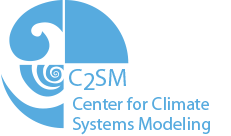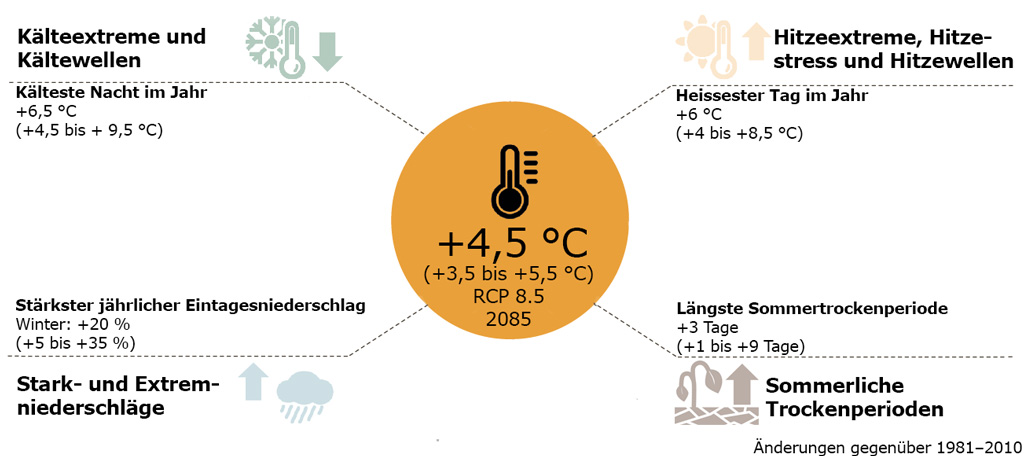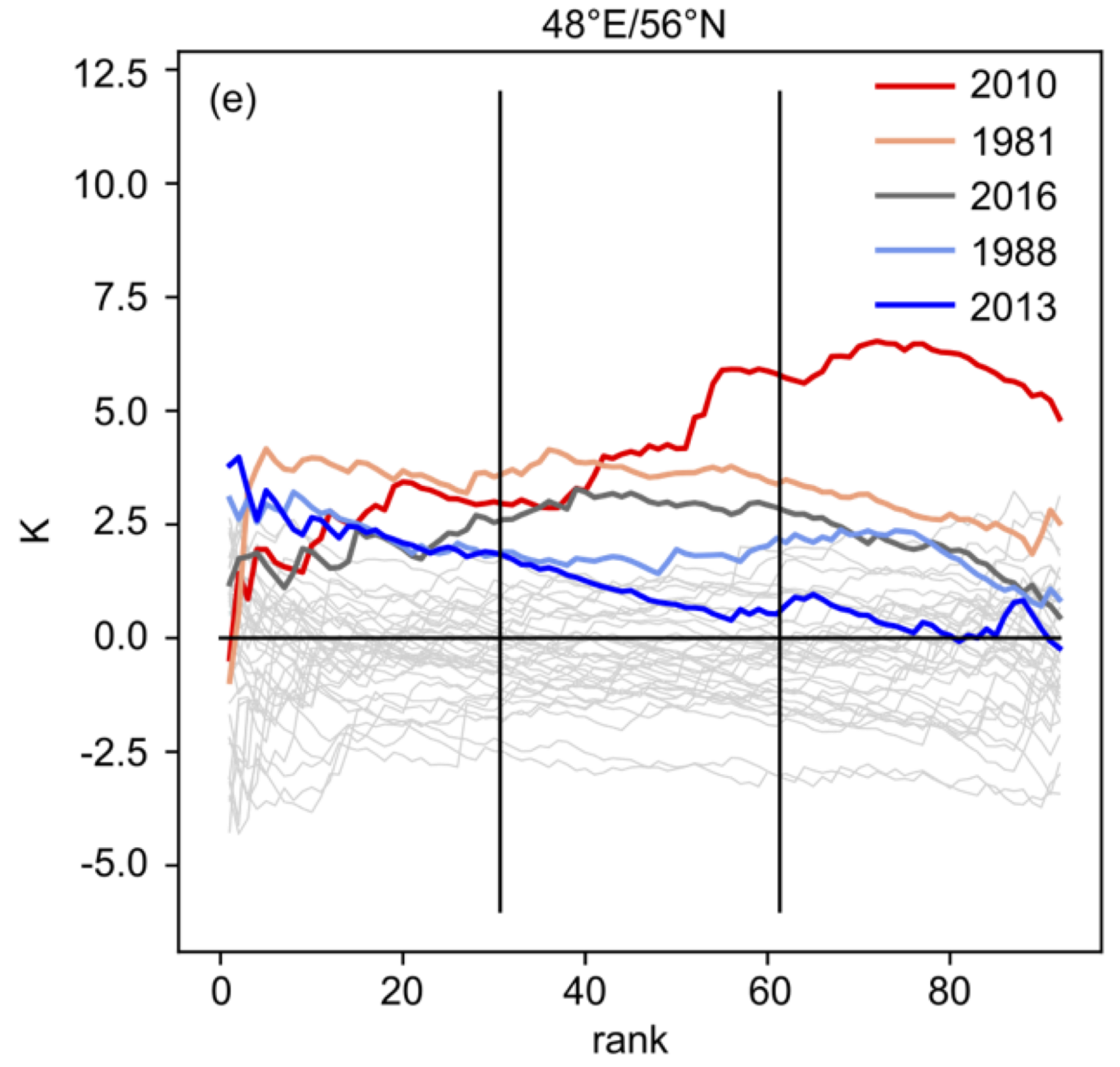C2SM Newsletter vol. 30
Topics in this Newsletter - May 2020
- News from the Steering Committee
- Global modelling activities
- Regional modelling activities
- Scientific visualization activities
- News from C2SM projects
- News from MeteoSwiss
- News from Empa
- Selected press articles
- PhD defenses in the C2SM community
- Upcoming events of interest
- Paper:Sea‐Ice Induced Southern Ocean Subsurface Warming and Surface Cooling in a Warming Climate
- Paper: Assessing the response of forest productivity to climate extremes in Switzerland using model-data fusion
- Paper:New ERL paper on temperature monitoring in the Alpine region: How well do modern reanalyses perform?
- Paper: Substructure of extremely hot seasons in ERA-Interim and CESM simulations
In December 2019, C2SM was approved by the school board of ETH to be transitioned to an extradepartmental science center to be effective January 2021. The school board gave us not only a long-term perspective, but also a significant increase in core funding. Also the Department of Environmental Systems Science and MeteoSwiss increased their contribution, and together with the continuing strong financial support by Empa and WSL, we are looking ahead on the basis of an excellent funding base. While we no longer have a sunset clause, such an extradepartmental science center will undergo a review every five years.
In order to be ready to start the extradepartmental center next January, we have started already to implement the transition. This concerns renewing the contractual framework and our internal workflow. The decision gave us also the opportunity to apply for substantially larger financial resources from the ETH+ (now Open ETH) initiative. The proposal “EXtreme-scale Computing and data platform for cLoud-resolving weAther and clImate Models» (EXCLAIM), was submitted by the chair of C2SM, Prof. Nicolas Gruber, in December 2019, and was approved to the second proposal stage in March 2020 with a submission deadline at the end of May. A decision on the proposal is expected this summer. If we were to be successful, this would significantly strengthen our activities on high-performance computing for the next 6 years.
Global modelling activities
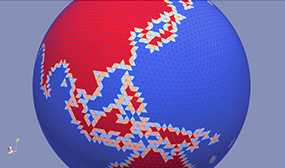
Recent activities from the global climate modelling group included the preparation of the first part of the Git Workshop offered by C2SM, which has been reported because of the COVID-19. Furthermore, we provided support for the technical part of the renewal report of the project at CSCS by the C2SM members Ulrike Lohmann, Martin Wild, and Daniela Domeisen. The global climate modelling group supported the ICON model by installing different ICON codes (for example ICON-HAM, ICON-ART or ICON-TOOLS) on CSCS and ETHZ computers, organizing and documenting the latter ICON codes in the C2SM-ICON organization on GitHub, and help local users. Besides, C2SM organized two ICON meetings for its community members. The C2SM-ICON meetings are announced via a mailing list. If you wish to subscribe, please send a short email to Colombe Siegenthaler.
Regional modelling activities

The C2SM RCM community started 2020 with a successful COSMO User Workshop, held this year at EMPA Dübendorf. The workshop had about 40 attendees, including those from C2SM member institutions including ETH Zürich, EMPA, MeteoSwiss, and WSL. The program and presentations from the event can be found at: https://wiki.c2sm.ethz.ch/COSMO/EventsCUW2020
Spring activities in the RCM team have focused on the improvement of the EXTPAR software, with an internship specifically dedicated to this task, and the porting of the COSMO physics parameterizations to GPU in the ICON model.
Scientific visualization activities
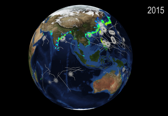
Our SciViz expert Tarun Chadha has taken an open-ended position at Scientific IT Services of ETH in April 2020. We congratulate him on this step forward in his career and wish him all the best for the future. Therefore, and due to the transition of C2SM into an extradepartmental center, which comes along with a refocusing of resources on supporting research activities, we will suspend the SciViz service for the time being. We may later resume the services or build something similar. This will be decided upon at a later time.
News from C2SM projects
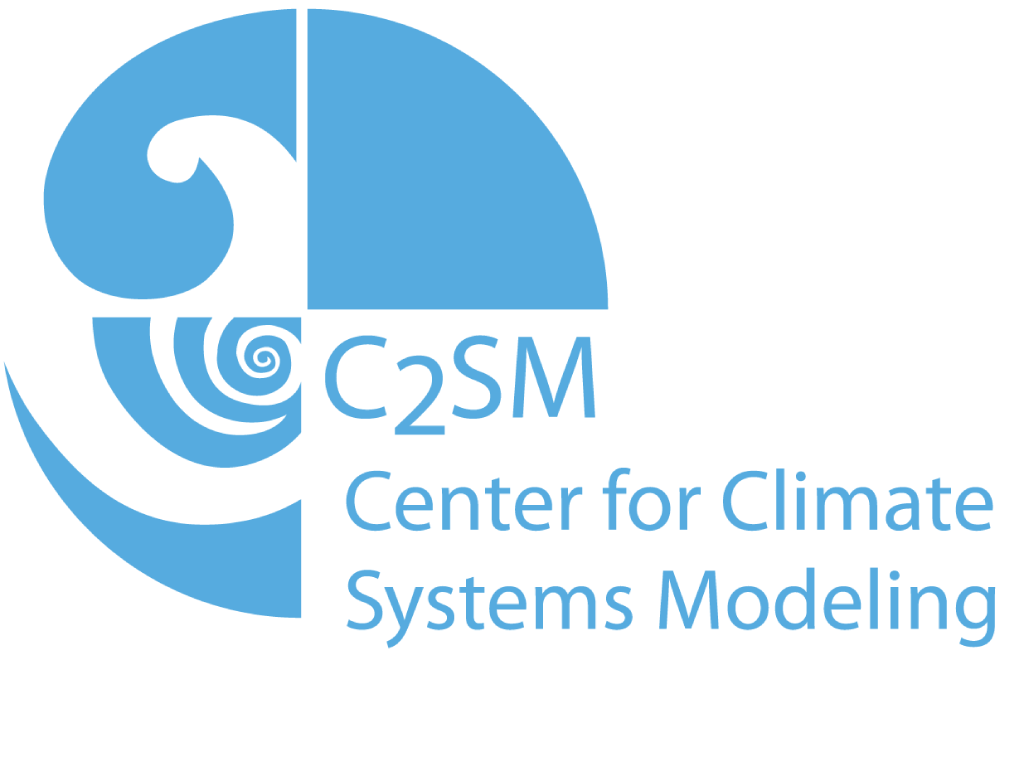
WEW-COSMO
WEW-COSMO (Weiterentwicklungen COSMO) is a research and technical development collaborative project hosted at C2SM, funded by MeteoSwiss and partly by the consortium COSMO, which focuses on improving the COSMO and ICON weather forecast and climate models for the application in the Alpine region. One focus is on improving parameterisations such as fog, hail, heavy precipitation, and many more. In addition, an ensemble dispersion system is developed and the numerical weather forecast is further developed in the nowcasting range. A second focus of the project is on adapting and testing the COSMO and ICON models to be used on hybrid high-performance architectures. The project is a collaboration between ETH Zurich, C2SM at ETH Zurich, and the Federal Office for Meteorology and Climatology MeteoSwiss. The project started in 2017 and will continue until the end of 2022.
Remo Dietlicher is working on making the physical parametrizations of ICON GPU-capable. Since ICON's climate and limited area mode use the same dynamical core, that part of the model has already been ported as part of the ENIAC project. As of now and in collaboration with Katherine Osterried, the microphysics, land and turbulence components run on GPU. The biggest missing part is the radiation component. For NWP, this will be the radiation scheme "ecrad" developed at ECMWF. To reduce the amount of maintenance work needed to keep up-to-date with recent scientific developments at ECMWF we are currently investigating the use of source-to-source translators like CLAW. This approach could allow to decouple hardware-specific code changes (like OpenACC statements and optimizations) from scientific code development.
Visualization of Ensemble Dispersion Simulations at MeteoSwiss
The response to emergencies like the release of radioactivity into the atmosphere relies to a large degree on atmospheric dispersion simulations. These are driven by numerical weather prediction models, which are increasingly run as ensembles in order to estimate meteorological uncertainty. To leverage such information for emergency response, MeteoSwiss is developing an ensemble dispersion simulation tool chain. It is based on FLEXPART and is driven by one of the new COSMO ensembles. The development takes place in the framework of the project EMER-Met, within which the C2SM postdoc Stefan Rüdisühli is employed. His main task is developing ensemble visualization products. This poses a particular challenge in the context of emergency response: Not only must these products convey all information required for quick decisions, but additionally do so in a way that is easily understood by non-experts. A first set of products will be finished later this year.
Extension of ENIAC approved
The aim of the PASC ENIAC project (Enabling the ICON model on heterogeneous architectures, PI: Ulrike Lohmann, July 2017 – Jun 2020) was to adapt the numerical weather prediction and climate model ICON to new hardware technologies such as GPUs and investigate the question of performance portability. In the framework of this project, a GPU-capable version of the model using OpenACC compiler directives was developed in a collaboration between ETH, C2SM, MeteoSwiss, CSCS, and MPI Hamburg. Now an extension of the project has been approved for one year. The extension will focus on porting additional components, in particular the HAM aerosol physics, to OpenACC, so that the model can be used on existing GPU systems such as Piz Daint in more configurations. In addition, the CLAW source to source translation tool approach, developed at C2SM in a previous PASC project, will be extended to improve performance portability of the code and allow to address new GPU architectures. C2SM will hire two postdocs on this project.
News from MeteoSwiss
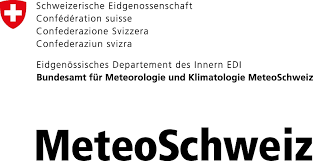
New NCCS info page: Future changes of climate extremes
On the NCCS-webplatform www.nccs.ch a new sub-site has been released that summarizes the expected changes of extremes according to the CH2018 climate scenarios. The site is fed by graphics from the CH2018 webatlas, giving practitioners of various sectors a better handle on how to interpret the information. To access the site directly (currently available in German and French only) visit https://www.nccs.admin.ch/nccs/de/home/klimawandel-und-auswirkungen/schweizer-klimaszenarien/zahlen-und-fakten/klimaextreme.html
Figure 1: Climate extremes
Empa will participate in a newly funded EU project CoCO2 (2021-2023) and lead one of its work packages.
The project, led by ECMWF and with 25 academic, industrial and institutional partners, will develop an operational European capacity for monitoring anthropogenic CO2 emissions to support EU countries in assessing their progress for reaching their targets agreed in the Paris Agreement. The monitoring will rely on new satellite observations of CO2 combined with ground-based measurements and atmospheric transport simulations.
Selected press articles
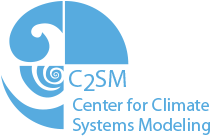
- Schaffhauser Nachrichten: external page«In Schaffhausen bald wie in Kalabrien leben»call_made, (Dr. Andreas Fischer), March 2020
- Tages Anzeiger: external page«Ein Ozonloch auch über der Arktis»call_made (Prof. Daniela Domeisen, Prof. Thomas Peter), March 2020
- SRF, Einstein: external page«Der Meeresspiegelanstieg ist der schlafende Elefant im Porzellanladen»call_made (Prof. Reto Knutti), March 2020
- Die Wochenzeitung: external page«Es gibt kein Ausland mehr, in dem man kompensieren kann»call_made, (Prof. Sonia Seneviratne), March 2020
- SWR Aktuell: external page«Grönland will Schmelzwasser vermarkten: macht das Sinn?»call_made (Prof. Konrad Steffen), February 2020
- swissinfo: external page«Biodiversität zahlt sich für Landwirte aus»call_made (Prof. Nina Buchmann), February 2020
- SRF 1, Schweiz aktuell: external page«Der Silsersee im Engadin ist von Schwarzeis bedeckt»call_made (Prof. Daniel Farinotti), January 2020
- Aargauer Zeitung: external page«Den Meeren geht der Sauerstoff aus»call_made (Prof. Nicolas Gruber), December 2019
PhD Defenses in the C2SM community

We congratulate our community members for their successfully completed PhDs!
- Roman Attinger: Quantifying the diabatic modification of potential vorticity in extratropical cyclones. ETH Zurich, 12 Dec 2019.
- Annika Oertel: Embedded convection in warm conveyor belts. ETH Zürich, 16 Dec 2019.
- Elisa Spreitzer: Diabatic processes in mid-latitude weather systems – a study with the ECMWF model. ETH Zürich, 19 Feb 2020.
- Iris Thurnherr: Investigation of air-sea interactions and moist processes in the Southern Ocean from stable water isotopologues. ETH Zürich, 26 March 2020.
Paper: Sea‐Ice Induced Southern Ocean Subsurface Warming and Surface Cooling in a Warming Climate
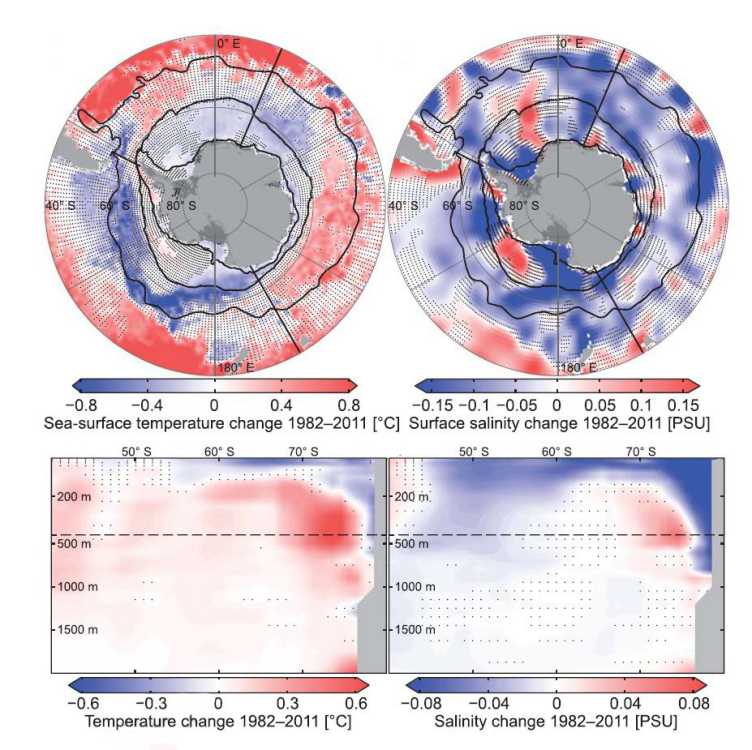
Much of the Southern Ocean surface south of 55° S cooled and freshened between at least the early 1980s and the early 2010s. Many processes have been proposed to explain the unexpected cooling, including increased winds or freshwater fluxes. However, these mechanisms so far failed to fully explain the surface trends and the concurrent subsurface warming (100 to 500 m). Here, we argue that these trends are predominantly caused by an increased wind‐driven northward sea‐ice transport, enhancing the extraction of freshwater near Antarctica and releasing it in the open ocean. This conclusion is based on factorial experiments with a regional ocean model. In all experiments with an enhanced northward sea‐ice transport, a strengthened salinity‐dominated stratification cools the open‐ocean surface waters between the Subantarctic Front and the sea‐ice edge. The strengthened stratification reduces the downward mixing of cold surface water and the upward heat loss of the warmer waters below, thus warming the subsurface. This sea‐ice induced subsurface warming mostly occurs around West Antarctica, where it likely enhances ice‐shelf melting. Moreover, the subsurface warming could account for about 8 ± 2% of the global ocean heat content increase between 1982 and 2011. Antarctic sea‐ice changes thereby may have contributed to the slowdown of global surface warming over this period. Our conclusions are robust across all considered sensitivity cases, although the trend magnitude is sensitive to forcing uncertainties and the model's mean state. It remains unclear whether these sea‐ice induced changes are associated with natural variability or reflect a response to anthropogenic forcing.
Haumann FA, Gruber N, Münnich M: Sea‐ice induced Southern Ocean subsurface warming and surface cooling in a warming climate. AGU Advances 2020, 1: e2019AV000132, doi: 10.1029/2019AV000132
Paper: Assessing the response of forest productivity to climate extremes in Switzerland using model-data fusion
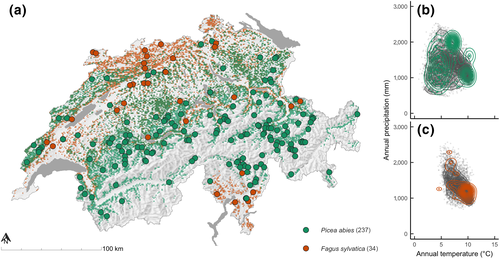
The response of forest productivity to climate extremes strongly depends on ambient environmental and site conditions. To better understand these relationships at a regional scale, we used nearly 800 observation years from 271 permanent long-term forest monitoring plots across Switzerland, obtained between 1980 and 2017. We assimilated these data into the 3-PG forest ecosystem model using Bayesian inference, reducing the bias of model predictions from 14% to 5% for forest stem carbon stocks and from 45% to 9% for stem carbon stock changes. We then estimated the productivity of forests dominated by Norway spruce and European beech for the period of 1960–2018, and tested for productivity shifts in response to climate along elevational gradients and in extreme years. Simulated net primary productivity (NPP) decreased with elevation ( 2 . 8 6 ± 0 . 0 0 6 M g C h a − 1 y e a r − 1 k m − 1 f o r spruce a n d 0.93 ± 0.010 Mg C ha−1 year−1 km−1 for beech). During warm–dry extremes, simulated NPP for both species increased at higher elevations, but decreased at lower elevations. About 21% of the potential species distribution range in Switzerland showed reductions in NPP of more than 25%. Reduced plant water availability had a stronger effect on NPP than temperature during warm-dry extremes. Importantly, cold–dry extremes had negative impacts on regional forest NPP comparable to warm–dry extremes. Overall, our calibrated model suggests that the response of forest productivity to climate extremes is more complex than a simple shift toward higher elevations. Such robust estimates of NPP are key for increasing our understanding of forests ecosystems carbon dynamics under climate extremes.
Trotsiuk V, Hartig F, Cailleret M, Babst F, Forrester DI, Baltensweiler A, Buchmann N, et al. (2020) Assessing the response of forest productivity to climate extremes in Switzerland using model-data fusion. Global Change Biology 26: 2463–2476, doi.org/10.1111/gcb.15011
Paper: New ERL paper on temperature monitoring in the Alpine region: How well do modern reanalyses perform?
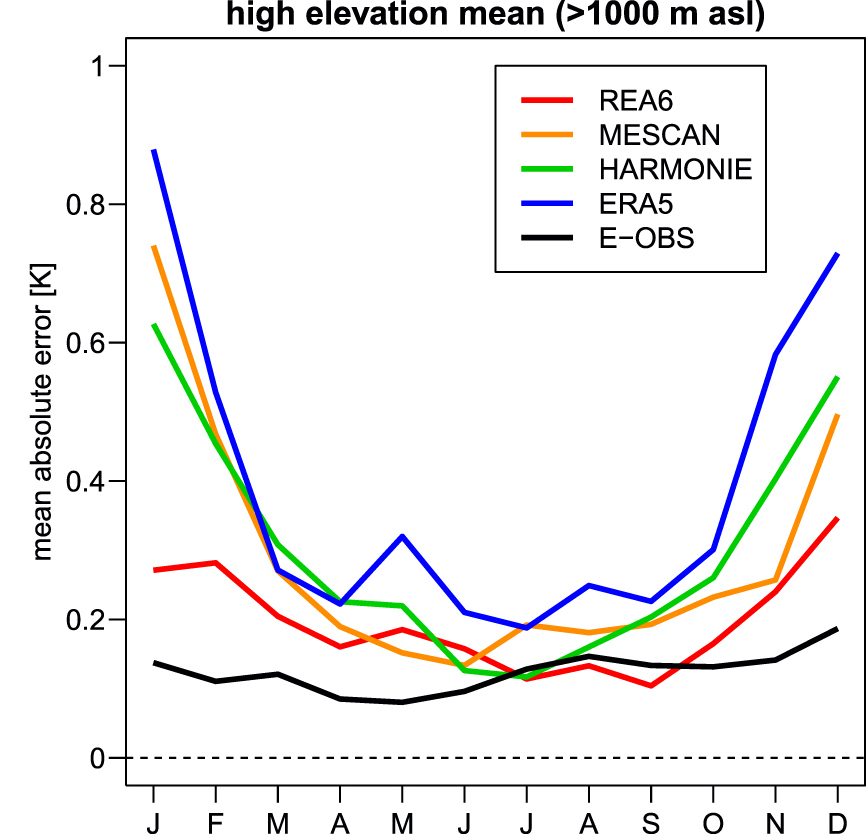
A recently published paper by Simon Scherrer (MeteoSwiss) assesses the monitoring capabilities of modern reanalyses in the Swiss Alps during the last 20 to 60 years. Monthly and seasonal 2 m air temperature (T2m) anomalies of the global ERA5 and three regional reanalyses are evaluated against high quality in-situ observational data. All reanalyses show a good year-round performance for the foothills with ERA5 showing the best overall performance. The high-resolution regional reanalysis COSMO-REA6 clearly performs best at high elevations, especially in winter. Most reanalyses show deficiencies at high elevations in winter and considerably overestimate recent T2m trends in winter. Hence, utmost care is required when using reanalyses for T2m trend assessments in the Alps, even in the most recent decades. A high-resolution model topography is an important prerequisite for an adequate monitoring of winter T2m at high elevations and assimilating T2m remains challenging. The remaining shortcomings highlight the continued need for a reliable and dense in-situ observational monitoring network in mountain regions.
Scherrer, S. C., 2020. Temperature monitoring in mountain regions using reanalyses: Lessons from the Alps. Environ. Res. Lett., 15, 044005. doi.org/10.1088/1748-9326/ab702d
Paper: Substructure of extremely hot seasons in ERA-Interim and CESM simulations
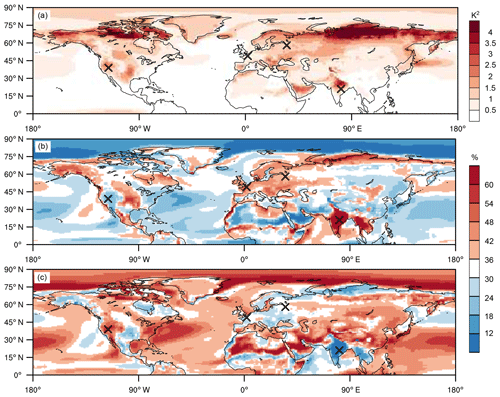
In this study we quantify how much the coldest, middle and hottest third of all days during extremely hot summers contribute to their respective seasonal mean anomaly. This extreme-summer substructure varies substantially across the Northern Hemisphere and is directly related to the local physical drivers of extreme summers. For example, in eastern India the hottest 30 d of an extreme summer contribute more than 65% to the total extreme-summer T2m anomaly, while the colder days are close to climatology. In the high Arctic, however, extreme summers occur when the coldest 30 d are substantially warmer than they are climatologically. Furthermore, in roughly half of the Northern Hemisphere land area, the coldest third of summer days contributes more to extreme summers than the hottest third, which highlights that milder- than-normal coldest summer days are a key ingredient of many extreme summers. Comparing extreme-summer substructures in ERA-Interim and CESM present day climate simulations reveals a remarkable level of agreement.
Röthlisberger, M., M. Sprenger, E. Flaounas, U. Beyerle, and H. Wernli, 2020. The substructure of extremely hot summers in the Northern Hemisphere. Weather Clim. Dynam., 1, 45–62. doi:10.5194/wcd-1-45-2020

